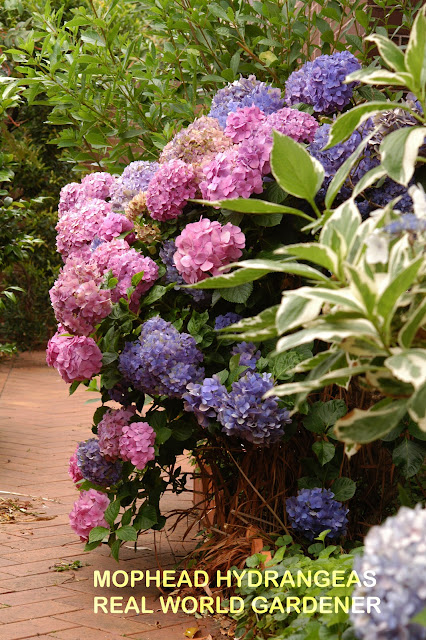What’s On The Show Today?
What to do about pests that shred leaves in Plant Doctor, grow a stunning tree with flowers on its trunk in plant of the week, discover the world of aquaponics in the Good Earth and a flower that signifies remembrance in Talking Flowers.
PLANT DOCTOR
Lily Caterpillar

The secret to controlling pests in the garden is to understand their life cycle, and watch for early signs of infestation so they can be stopped in their tracks before they become a problem.
The first sign of infestation this next plant pest is the skeletonising of leaves.
In the adult stage the parent (lily moth) lays up to 100 eggs at a time on the tip of a leaf, and the growing (pest) caterpillars then work their way down to the base of the plant.
These voracious pests ( caterpillars) can destroy a clump of clivias or other lilies in record time.
Lily caterpillars are a native pest common along the east coast of Australia but can be seen in other regions. Generally a dark grey to black colour with yellow and white markings down the side.; about 5 cm long.
The adult moth is like your average brown moth with a wing span of around 5 cm and can lay up to 100 eggs at a time.
Let’s find out all about this pest.
I'm talking withSteve Falcioni, general manager of
www.ecoorganicgarden.com.au
The Lily caterpillar attacks clivea, crinums, hippeastrums, the spider lily (hymenocallis) and other plants in the lily family.
Young caterpillars skeletonise leaves while older ones can strip leaves or attack the crown of the plant.

Very quickly plants are an ugly mess of caterpillars, droppings and collapsing plant foliage. Attacked foliage dies and leaves the plants looking very unsightly.
Lily Caterpillar, calagramma picta, pupate under mulch and then travel up the stems of many types of lilies, munching as they go - eating leaves, stems and flower buds.
Caterpillars pupate in leaf litter or the soil before emerging as adult moths to start the cycle again. There are several generations a year with the most damage noticed during the warmer months.
Look for the caterpillars on the underside as well as the tops of the leaves.
Damage caused by the lily caterpillar is severe and can result in plant death.
Plants which survive usually take a long time to recover.
If you have any questions about growing your own turmeric, then why not email us
realworldgardener@gmail.com or write in to 2RRR PO Box 644 Gladesville NSW 1675
THE GOOD EARTH
Introduction to Acquaponics.
What is it?
Put simply, Aquaponics is the combination of aquaculture (raising
fish) and hydroponics (the soil-less growing of plants) that grows fish and
plants together in one integrated system.
The fish waste provides an organic
food source for the plants, and the plants naturally filter the water for the
fish.
Start off with a fish tank, and buy your fingerlings ( baby fish) either Silver Perch or Barraminudi are a couple of excellent suggestions.
Attach plumbing to growing beds which contain a soilless medium such as Scoria, expanded clay balls ( Hydroton) even Perlite.
Each one has pros and cons for using it, for example, although Perlite is very light, it tends to wash away easily.
Water is reticulated ( circulated ) around the system so that the beds fill up with water constantly, then the water level drops as it's fed back into the fish tank.
The fish provide fish waste that feeds the plants.
The plants use this fish waste and filter out the water which is recycled back into the fish tank.
Robyn, says in here system of 5-6 growing beds, she never needs to flush out or replace the water other than to top it up due to evaporation.
There's more to it than that of course.
Find out by listening to the podcast.
I'm talking with Robyn Rosenfeldt, editor of Pip Magazine.
PLANT OF THE WEEK
Cercis chinensis " Avondale"
Chinese Redbud.
Why this tree is so spectacular is that it has flowers not just at the end of the branches but all along the stems and trunk right down to the ground.
Masses of deep purple or deep rose-pink pea like flowers
appear along the bare stems in late winter to early spring.
The flowers are
held close up and down the stem and right down to the bottom of the trunk.
A spectacular show of flowers that appear in large clusters.
Fruits are attractive bean like pot that's purple make a decorative feature in late Summer.
Flowers on the straight species are pink or milky white, and
the leaves are a bit more rounded but still heart shaped.
Flowers last about 3 weeks.
Let’s find out about this plant.
I'm talking with
the plant panel : Karen Smith, editor of Hort Journal www.hortjournal.com.au and Jeremy Critchley, The Green Gallery wholesale nursery owner. www.thegreengallery.com.au
- Cercis chinensis Avondale is very small for a tree being 3 x 2 metres, with spectacular flower and heart shaped leaves.
- Does love a good water during dry spells but otherwise reasonably hardy.
- All Cercis have a tap root so that's a no for transplanting and possibly for growing in pots too.
TALKING FLOWERS
Poppies for Remembrance
Poppies were given the official title of Remembrance due them growing en masse in the fields where thousands of soldiers perished in WWI
Mercedes has an interesting anecdote about how you can make your dreams come true.
All you need to do is to whisper your dreams into your hand with the poppy seeds before sowing.
When the poppies grow and flower, your dreams shall come true. Let's hope.
Some of the
most widely used grown types of Poppies include the Papaver somniferum ( only by licence because that's the Opium poppy), Papaver orientale, and Eschscholzia californica or Californian poppy.
Recorded live as the show went to air on Facebook live.








